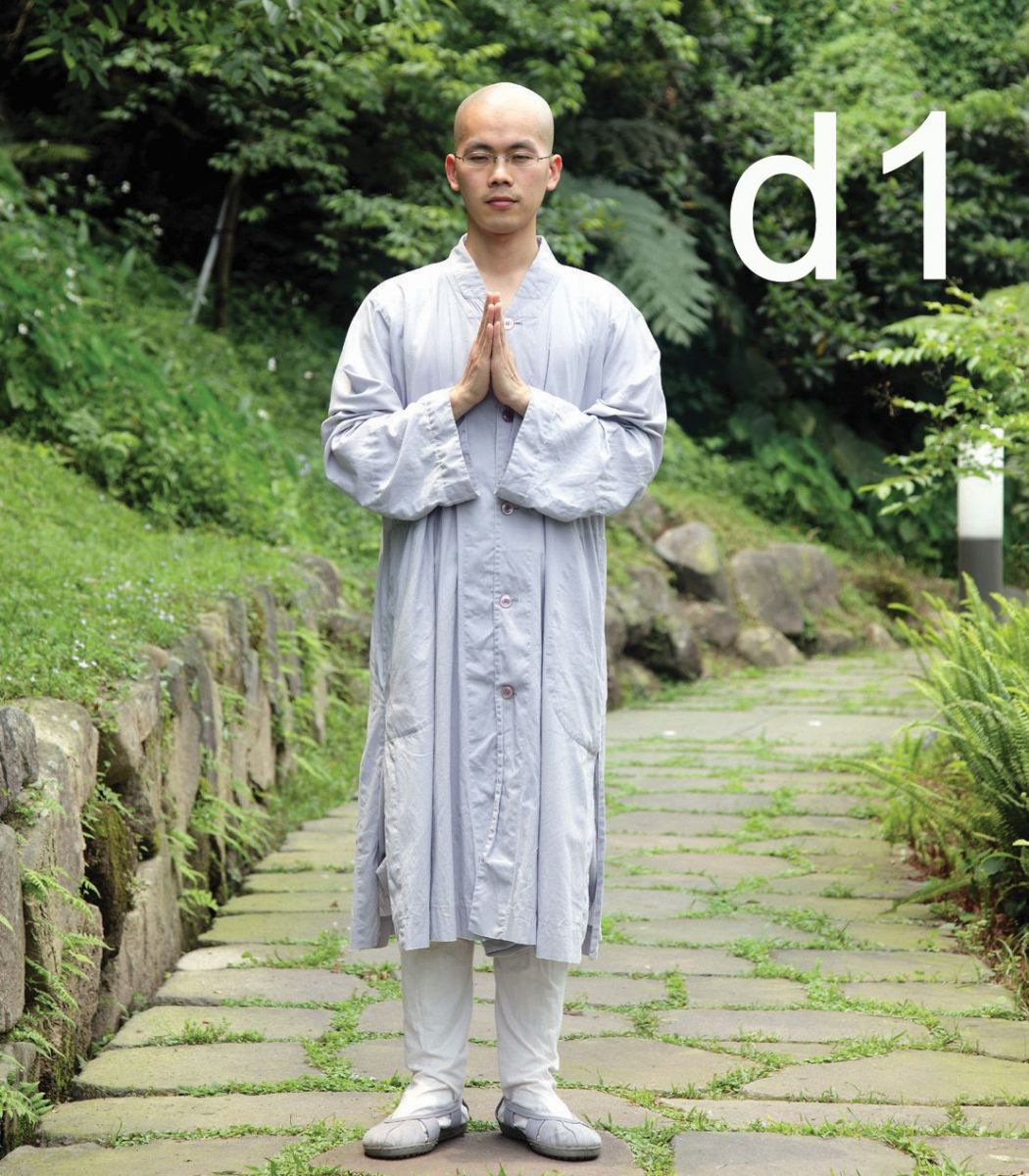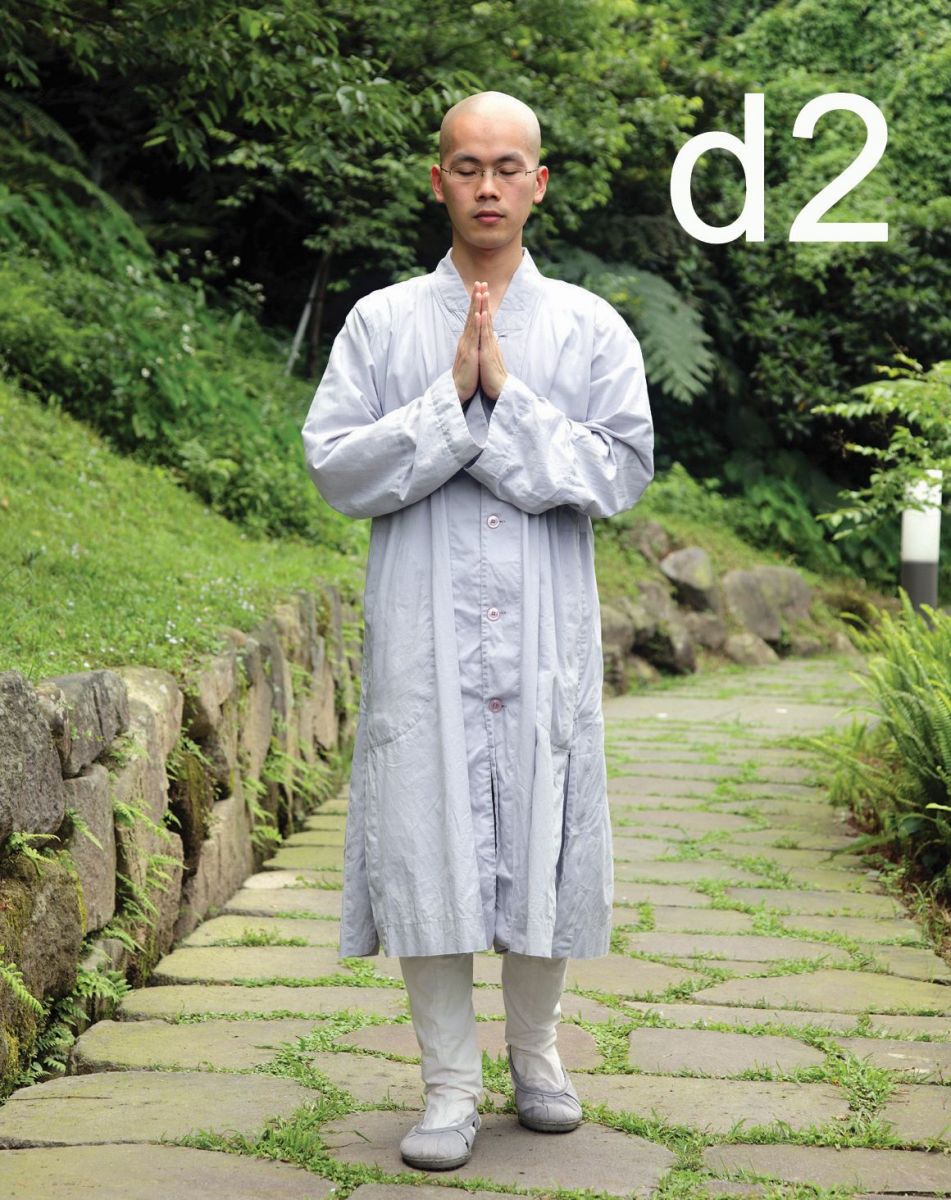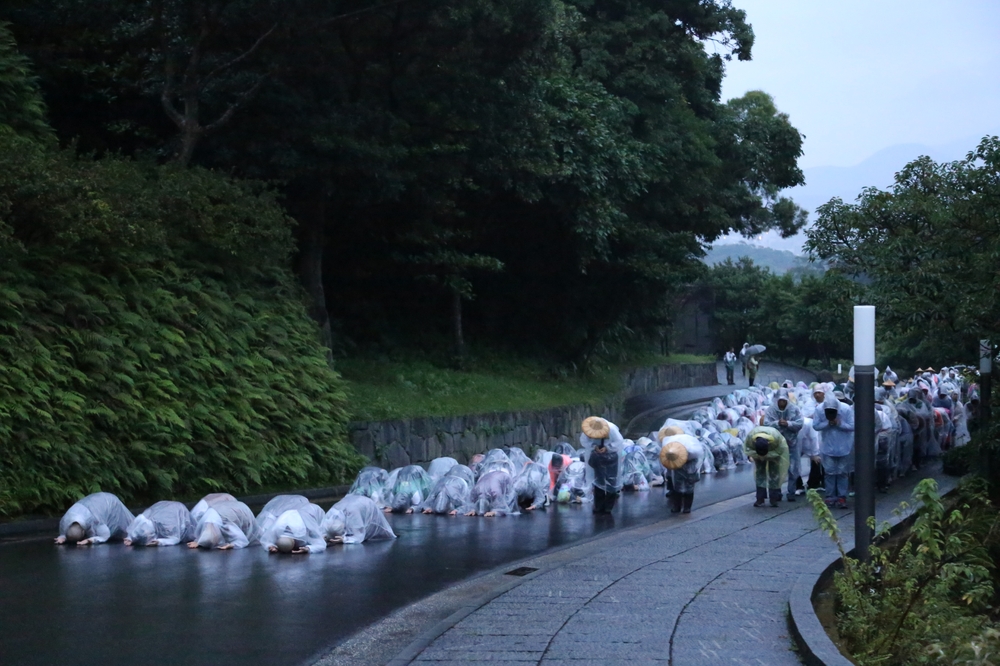Special Topics
Pilgrimage
To go on a pilgrimage is to visit, and pay homage to, sacred sites or holy relics of Buddhas or Bodhisattvas. This practice method takes after ancient masters' journeys to seek Dharma or worship holy sites. Through pilgrimage, we cultivate our faith in practicing the Bodhisattva's path. While performing "three steps and one prostration", we recite a Buddha or Bodhisattva's name, prostrate, and repent sincerely. In this way, we lessen our arrogance and harmonize our body and mind. With each repeated prostration, we gradually build a Pure Land in our mind.
There are two modes of pilgrimage: Individual Pilgrimage and Group Pilgrimage. When we go on an Individual Pilgrimage, we can recite a Buddha or Bodhisattva's name silently in our mind.
The following are methods and procedures of Group Pilgrimage.
Prerequisites:
 1. Keep the head upright and tuck in the chin slightly. Straighten the back and the waist, without letting your abdomen protrude. Relax every part of the body from head to toe, as much as possible.
1. Keep the head upright and tuck in the chin slightly. Straighten the back and the waist, without letting your abdomen protrude. Relax every part of the body from head to toe, as much as possible.
2. Join the palms in front of the chest. (See picture d1)
3. Lower the eyelids and smile.
Method:
1. At the starting point of the pilgrimage, kneel down and join the palms. Then, make a vow after three recitations of "Homage to the original teacher, Shakyamuni Buddha."
 2. After making a vow, prostrate once and stand up to make a bow. Then, start the pilgrimage.
2. After making a vow, prostrate once and stand up to make a bow. Then, start the pilgrimage.
3. To start, recite Buddha's or Bodhisattva's name with a mind of gratitude. As you recite, make one prostration every three steps.
There are two modes of pilgrimage: Individual Pilgrimage and Group Pilgrimage. When we go on an Individual Pilgrimage, we can recite a Buddha or Bodhisattva's name silently in our mind.
The following are methods and procedures of Group Pilgrimage.
Prerequisites:
 1. Keep the head upright and tuck in the chin slightly. Straighten the back and the waist, without letting your abdomen protrude. Relax every part of the body from head to toe, as much as possible.
1. Keep the head upright and tuck in the chin slightly. Straighten the back and the waist, without letting your abdomen protrude. Relax every part of the body from head to toe, as much as possible.2. Join the palms in front of the chest. (See picture d1)
3. Lower the eyelids and smile.
Method:
1. At the starting point of the pilgrimage, kneel down and join the palms. Then, make a vow after three recitations of "Homage to the original teacher, Shakyamuni Buddha."
 2. After making a vow, prostrate once and stand up to make a bow. Then, start the pilgrimage.
2. After making a vow, prostrate once and stand up to make a bow. Then, start the pilgrimage.3. To start, recite Buddha's or Bodhisattva's name with a mind of gratitude. As you recite, make one prostration every three steps.
Start by reciting "Na mo (Homage to)" while standing.
Then step forward with the right foot while reciting "ben shi (the original teacher)."
Step forward with the left foot while reciting "shi jia (Shakya)."
Step forward with the right foot again while reciting "mo ni" (muni)."
Finally, bring the left foot in line with the right while reciting "fo (Buddha)."
Then step forward with the right foot while reciting "ben shi (the original teacher)."
Step forward with the left foot while reciting "shi jia (Shakya)."
Step forward with the right foot again while reciting "mo ni" (muni)."
Finally, bring the left foot in line with the right while reciting "fo (Buddha)."
 4. Upon hearing the bell after the three steps, make a prostration (shown in Pictures d3 and d4). Stand up when you hear the bell again.
4. Upon hearing the bell after the three steps, make a prostration (shown in Pictures d3 and d4). Stand up when you hear the bell again.5. Repeat Steps 3 and 4 until the end of the pilgrimage.
6. At the pilgrimage destination, make a bow toward the direction of the Buddha statue, or facing the front of the destination.
7. Recite Transfer the Merit verses and make three prostrations to conclude the pilgrimage.
 The way to stay mindful while on a pilgrimage is the same as while practicing walking meditation with Buddha Name Recitation: focused on reciting and listening, we follow Buddha's name as we step forward. The only difference is that we also prostrate during a pilgrimage. When we prostrate, we are aware of every movement of our body: joining palms, bending the body, reaching out the arms, kneeling down, lowering knees and forehead to the ground, retrieving the hands and forming a fist, and, finally, standing up. We should be aware of every movement of the joints, as well as all sensations arising from the movements.
The way to stay mindful while on a pilgrimage is the same as while practicing walking meditation with Buddha Name Recitation: focused on reciting and listening, we follow Buddha's name as we step forward. The only difference is that we also prostrate during a pilgrimage. When we prostrate, we are aware of every movement of our body: joining palms, bending the body, reaching out the arms, kneeling down, lowering knees and forehead to the ground, retrieving the hands and forming a fist, and, finally, standing up. We should be aware of every movement of the joints, as well as all sensations arising from the movements.When we are on a pilgrimage, we prostrate with concentration and sincerity. As our foreheads and faces touch the ground, we learn to let go of arrogance and attachments, and sincerely repent of all misconduct performed in countless previous lives. Practicing in this way, our body and mind will gradually become supple and harmonized. When we are aware of the sensations of our bodies touching the earth, we will naturally give rise to gratitude to the earth for sustaining all life.
As we prostrate in repentance, we give rise to a mind of gratitude. As we reflect on ourselves, we give rise to the Bodhi-mind. Therefore, to go on a pilgrimage is not only to revere the holy sites and train the mind through walking and prostrations; it also serves to awaken our own Buddha-nature.
Resource: Issue 323 of Life Magazine, Dharma Drum Publishing Corporation
Translation: Hsiao Chen-an
Editing: Shujen Yeh (葉姝蓁), Keith Brown
Extended Reading:
Practice Walking Meditation to Experience Chan in Motion
Slow Walking Meditation
Fast Walking Meditation
Buddhist Circumambulation (Walking Meditation and Buddha Name Recitation)
See all the articles of the column, Walking Like the Buddha.
